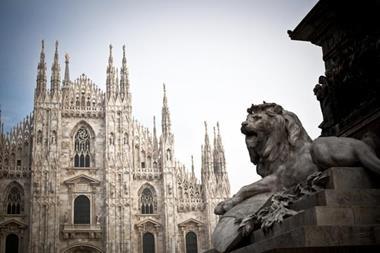The economic downturn introduces new risks and emphasises old ones. Nathan Skinner investigates what is making companies cautious and how the insurance industry is responding
Without doubt the biggest worry for risk managers comes from the economic downturn. Growth rates among the most developed countries are stagnating; some are even turning negative. Already the International Monetary Fund has been forced to bail out some developing countries, such as Hungary, Ukraine and Pakistan.
The deteriorating global market conditions, combined with tighter credit, are hitting business hard. Manufacturing is one of the first sectors to have been struck by spending fears. All the biggest car makers have been affected. In the US, the three largest have been seeking a huge bail-out, running into billions. The situation in Germany is similar. If the motor industry started to collapse, the knock-on effects would be catastrophic on a global scale.
The threat of bankruptcy by key suppliers or customers is forcing many companies to look for financial protection. According to the UK Insolvency Service, the number of companies going into liquidation has increased by 32% since January. Credit insurance policies cover corporates against the risk of non-payment. As the risk rises, so does the cost of insurance. This was confirmed in a recent statement by Xavier Denecker, managing director of Coface in the UK: ‘It is clear that the cost of credit insurance policies is increasing as the financial crisis starts to affect the real economy.’ Some of the largest trade credit insurers have been forced to withdraw cover altogether. The UK’s largest trade credit insurer, Atradius, removed credit insurance cover from 12,000 businesses. The French government said it would guarantee credit cover for some companies.
Retailers are the ones finding it hardest to get credit insurance at a decent rate. ‘Underwriters are struggling with the retail sector,’ explains Andrew Perry, director of special risks at Miller, the insurance brokers.
If risk managers are getting squeezed by their credit insurers, Perry recommends that they consider moving their whole turnover policy to an excess of loss policy. ‘Companies that do so must be willing to undertake a large deductible,’ he says.
In tough times it is hard for companies to get hold of financing but this could also be an opportunity for risk managers. Banks are looking for firm guarantees that their investments are safe. If companies can show they have good risk management they may be able to secure credit more easily. Paolo Rubini, vice-chairman of the Italian risk management association ANRA and director of risk management for Telecom Italia, goes a step further. He thinks that companies with a strong risk function might even ‘gather financing at a lower cost’.
“Board members have good reason to ask for D&O protection
Stefan Sigulla, president, DVS
More claims
Another worry for risk managers, which is again rooted in the financial crisis, is the rise in the number of directors and officers (D&O) claims. There is a big potential for suits against directors arising from their conduct during the financial crisis. Further, at a recent briefing for AIRMIC members, Suzanne Kearney, director of SLS, a Crawford company, described the credit crunch as ‘a potential breeding ground for fraud.’ It has been noted in past cycles that people who are hard up have turned to dubious insurance scams as a potential bread winner.
The directors of pension schemes could be particularly exposed to claims from employees who are furious about the value left in their investments. Manufacturers who are shedding jobs because of a drop in demand for their goods, are also at risk. Redundancy is a key trigger for increased employer’s liability claims. And new laws increase directors’ responsibilities.
This trend has still to become evident and the soft D&O market has not yet turned, ‘although there may be some reticence from insurers to provide products to financial services firms,’ says Lockton’s Andrew Cornish. For the moment, the main market is awash with capacity.
Within days of the stock market crash, US insurer WR Berkley poached three senior AIG staff to start a new professional liability subsidiary offering D&O insurance. Meanwhile, Ace said that it would be writing commercial D&O at Lloyd's for the first time. Through its Lloyd's syndicate, Ace will offer a $35m (€ 27.5m) capacity.
Insurers, risk managers and brokers are all more or less convinced that the soft market cannot continue. The upswing is expected to come at some point over the next 18 months.
“Tackling sustainability makes sense economically
John Summers, chief risk advisor, Rio Tinto
Stefan Sigula, chairman of the German risk management association DVS and a risk manager for Siemens, says: ‘Board members have good reason to ask for D&O protection, not only for indemnification but also to organise the legal defence in the case of a lawsuit by shareholders. I expect increasing demand and increasing prices in this area.’
‘New’ risks
There are several other issues concerning companies as they look to the future. These could be termed emerging risks, but in many ways the risks are here today and only exacerbated by the current market conditions.
The internet has been around for more than two decades but still cyber risk seems to fall under the umbrella of ‘new risks’. There is nothing new about security of IT systems and data, but the challenge has grown exponentially since the dawning of the internet era. A vast amount of critical information is stored digitally, and criminal hackers are getting better at accessing it. There were nearly 300 reported incidents of data loss in the UK this year. Insurers are often criticised for not responding quickly to new liabilities, but the market has opened up to new opportunities. A large part of the industry finds underwriting cyber risk too complex, but many players offer cyber insurance, which can help with the costs of recreating data, reporting a breach and even repairing a damaged reputation.
Clean up
More and more companies are coming under fire for their environmental performance. It is not just the bombardment of new environmental regulations; the risk is reputational if the public doubts a company’s green credentials. Some investment funds filter out companies with green credentials as an indicator of how well the company is risk managed generally.
“Underwriters are struggling with the retail sector
Andrew Perry, director of special risk, Miller
‘Today, expectations about sustainability are getting higher and higher,’ says Jean-Michel Gires, executive vice president of sustainable development, for the oil giant Total.
Most of the questions concerning sustainability are non-insurable. Nevertheless, this issue should remain a high priority for forward thinking companies. Delivering carbon efficiency can save a company money, as well as future proofing it against tougher emissions targets. Britain has set a target of 80% reductions in its greenhouse gas emissions by 2050. ‘Tackling sustainability makes sense economically, and it can also improve the reputational standing of a company,’ says John Summers, chief risk advisor to the mining group Rio Tinto. Sustainable investments and engaging with the local community can be the difference between opening a new operation or getting beaten to it by a greener competitor.
On the risk side, claims for damages resulting from climate change could leave companies facing hefty bills. There’s little doubt the risk of litigation arising from climate change is rising. Last year, the US Supreme Court ruled that greenhouse gas emissions are pollutants that the Environmental Protection Agency should regulate. Europe’s Environmental Liability Directive also holds company directors accountable for environmental damage. Sunny Sehgal, head of environmental risks at HSBC Brokers foresees the development of certain products such as add-ons to D&O policies, which would cover companies for some of the new liabilities associated with carbon emissions. ‘We know of at least one insurer that has added such an extension.’ Another principle is linking green credentials with the insured’s level of risk. A green building, for example, would generally represent less of a fire risk. ‘This concept has not yet been fully explored,’ says Sehgal.
Well overdue
Based solely on historical recurrence rates, the world is due another major pandemic. Lloyd’s predicts that an epidemic today could cut global GDP by up to 10%. Smelling an opportunity, the market is encouraging insurers to offer new products to businesses to help them deal with the consequences. Most of the issues concerning a pandemic, however, are about business continuity planning and crisis management.
A snap in supply
The networks of trade and are wound tightly around the world. When they snap the consequent disruption causes delays and costs reputations. Aircraft manufacturer Airbus faced problems in the delivery of its super-jumbo, leading to compensation claims. Traditional supply chain cover is triggered by physical damage, but disruption can occur even if material damage does not. ‘Some new insurance policies address risks that were previously regarded as uninsurable,’ explains John Eltham of Miller. Trade disruption insurance responds to a loss or additional expense not stemming from physical loss or damage, he says.



















No comments yet